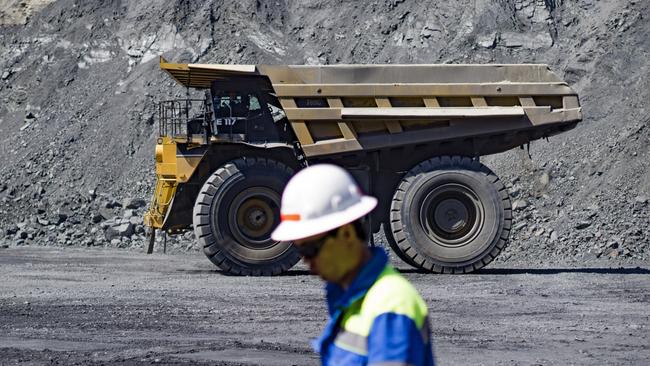US inflation data could test bull market
Shares have had a nice rebound since the January correction but Thursday’s release of US CPI data for January and the Fed’s response to inflation looms as a litmus test for the market.

Shares have had a nice rebound since the January correction but Thursday’s release of US CPI data for January and the Fed’s response to inflation looms as a litmus test for the market.
After falling as much as 19 per cent from its record high in November, the Nasdaq 100 recently bounced 11 per cent off its low in about a week, amid impressive rebounds in Apple and Amazon, even as Facebook continued to dive after quarterly results showed it’s “ex-growth”.
With some trend indicators turning positive again, the Nasdaq 100 looked set to test resistance from its 200-day moving average, which turned flat for the first time since the brief Covid-19 bear market of early 2020. A break above the 200-day average looked crucial for a resumption of the bull market.
The S&P 500 bounced 8.8 per cent in a week after falling 12.4 per cent from a record high in January, soon regaining its rising 200-day moving average as it did soon after the brief Covid bear market.
Australia’s S&P/ASX 200 has also recovered swiftly, bouncing 7.5 per cent in two weeks after briefly entering a technical correction last month when it fell as much as 11.5 per cent from its August peak.
Indeed it has been an encouraging “V-shaped” recovery in the local market and a test of key resistance from its 200-day moving average around 7325 looked possible in the near future.
Helpfully, comments from Fed, European Central Bank and Reserve Bank officials have been relatively dovish despite the decidedly hawkish communications from Fed chair Jerome Powell immediately after the FOMC meeting and despite the blowout Aussie CPI data last month.
Importantly, the sharemarket seems more comfortable with rapid fire rate hikes.
That’s partly due to stronger-than-expected US non-farm payrolls data last week.
The US market has now priced in a Fed funds hike of 33 basis points in March and 134 basis points of hikes by December, and the Australian market has priced 115 basis points of hikes by December.
But with US inflation expected to hit four-decade highs, CPI data will be a key focus,
In the wake of last month’s “capitulation”, magnified by margin calls, Bell Potter’s Richard Coppleson said the ASX 200 bounce “could “easily extend to 10 per cent or more”.
“But when we have this type of volatility, we often see the markets sell-off again and the lows are retested, so for now it looks like the calm before another storm.”
Interesting in this period has been the divergent performance of banks and resources.
BHP got an added boost from its massive upweight on the ASX following the collapse of its dual-listed structure, but there was also a surprisingly strong surge in iron ore and crude oil prices.
The market may have somewhat prepared for crude oil prices to exceed $US90 a barrel, but some fund managers will be shocked that spot iron ore got back up above $US150 a tonne so soon.
Bloomberg said China had “quietly scaled back its ambition to cut carbon emissions” from the steel industry as it balanced its long-term agenda with short-term economic costs.
But while shares of the big iron ore miners aren’t pricing in spot prices, a 9 per cent fall in Mineral Resources on Wednesday after its profit fell 96 per cent in the past year amid a plunge in iron ore prices is a reminder of the inherent volatility in prices.
Leading strategists continue to recommend commodity exposures as a hedge against inflation, and China has started easing macroeconomic policy after the near collapse of property developer China Evergrande.
But the impact on the growth outlook for China and other Asian emerging markets needs to be taken into account after a massive rebound in iron ore miners in the past few months.
And it should also be remembered that banks should benefit from rising interest rates, the trade on dividend yields and apart from CBA don’t look terribly expensive.
Australia’s 10-year bond yield hit a two-year high of 2.16 per cent on Tuesday.
BHP and Rio Tinto both rose about 37 per cent from lows in early November and Fortescue rose about 62 per cent, but the ASX 200 Banks index fell about 10 per cent to a 10-month low.
Helped by its ongoing share buyback, ANZ was surprisingly well supported after hitting a 12-month low on disappointing results this week. CBA added a 5.6 per cent after its core earnings beat market expectations by about that amount and it planned an earlier than expected buyback.
The result is that the divergence in share performance between banks and resources during the sharemarket sell-off last week has started to narrow considerably.
It may be a non-consensus view, but perhaps it’s time to switch back to banks short-term.








To join the conversation, please log in. Don't have an account? Register
Join the conversation, you are commenting as Logout